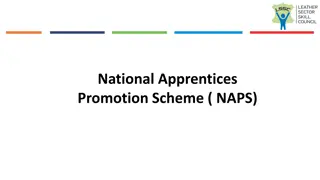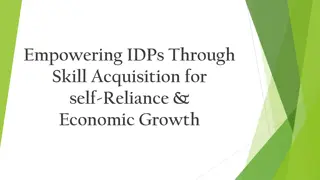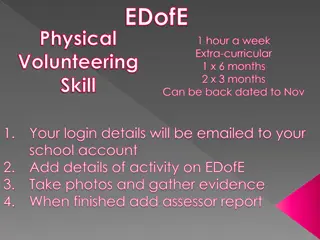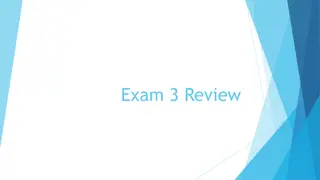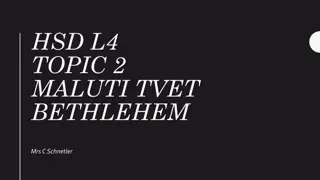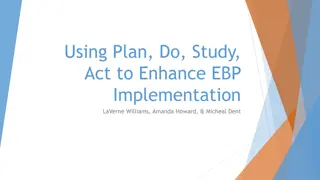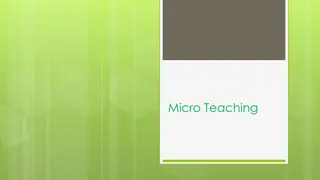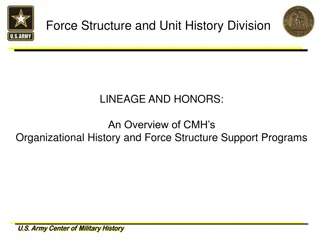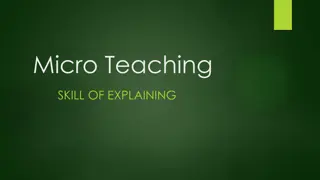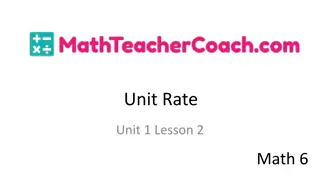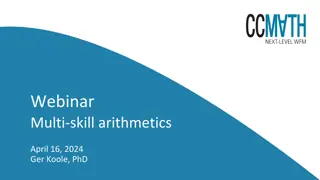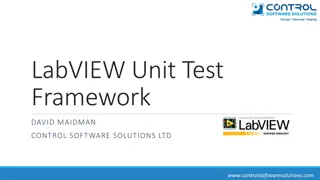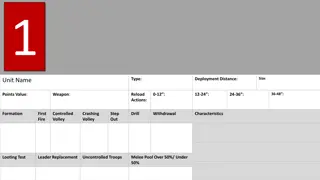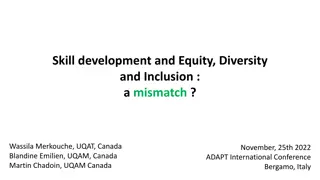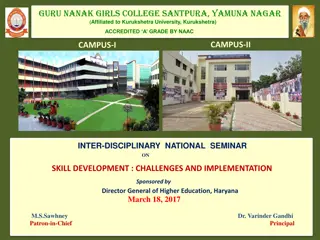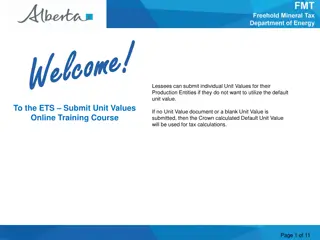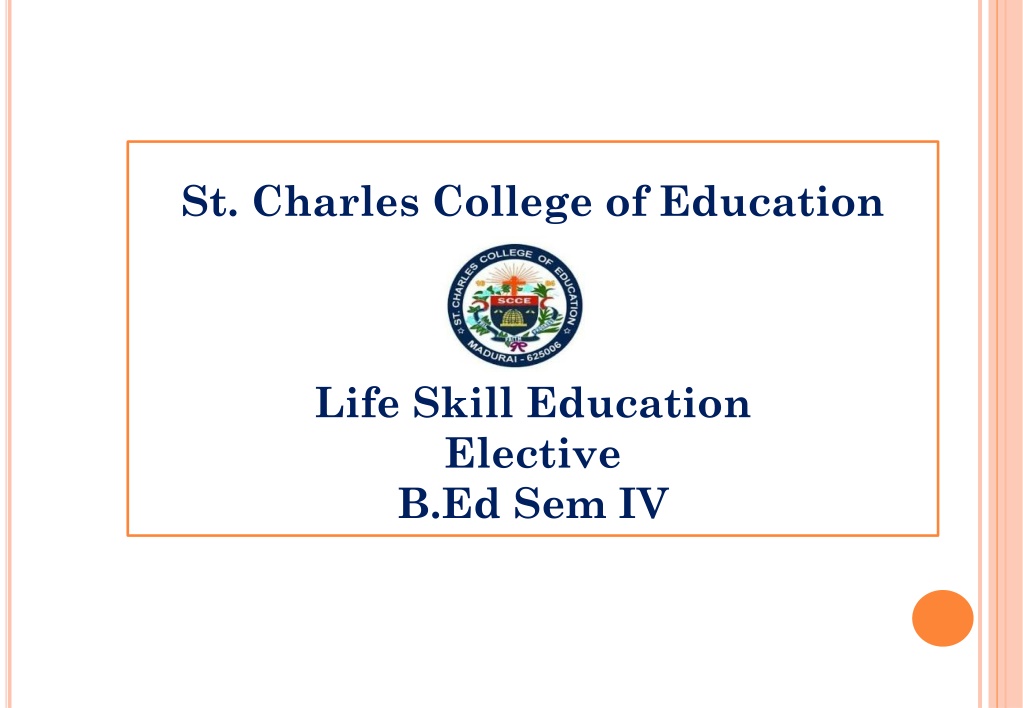
Effective Time Management Skills for Organizational Success
Enhance your understanding of leadership and management skills, including time management techniques like the Eisenhower matrix, Pareto analysis, Pomodoro technique, and Parkinson's Law. Learn how to prioritize tasks effectively to achieve optimal productivity and efficiency in running an organization.
Download Presentation

Please find below an Image/Link to download the presentation.
The content on the website is provided AS IS for your information and personal use only. It may not be sold, licensed, or shared on other websites without obtaining consent from the author. If you encounter any issues during the download, it is possible that the publisher has removed the file from their server.
You are allowed to download the files provided on this website for personal or commercial use, subject to the condition that they are used lawfully. All files are the property of their respective owners.
The content on the website is provided AS IS for your information and personal use only. It may not be sold, licensed, or shared on other websites without obtaining consent from the author.
E N D
Presentation Transcript
St. Charles College of Education Life Skill Education Elective B.Ed Sem IV
Unit 4 Leadership and Management Skills
There is a wide range of skills that management should possess to run an organization effectively and efficiently.. They are Technical skills Conceptual skills human or inter personal skills 4.2 Time Management: Timely management is the ability to use the available time productively and efficiently. Time management is about planning and organizing the time we spend on specific activities.
Components of Time Management: Urgent tasks demand your immediate attention, but whether you actually give them that attention may or may not matter. Important tasks matter and not doing them may have serious consequences for you and others. This is called Eisenhower matrix.
4.2.2 Techniques of Time management: Pareto Analysis Pamodoro Technique Eisenhower matrix Parkinson's law Time blocking method Getting things done method Rapid planning method Pickle Jar theory Pareto Analysis: Pareto analysis is premised on the idea that 80% of projects benefit can be achieved through 20% of the work or conversely 80% of the problems can be traced to 20% of the causes.
Pamodoro Technique: It was developed in late 1980s by the university student Francesco Cirillo. : Adaptation of the Pamodoro techniques in the classroom Explain the technique to your students Make sure that they have everything they need to be able to work for 20 minutes uninterrupted. Set the timer Enforce the break Set the timer again Assess the process
4.2.2.4. Parkinson's Law: It was developed by British civil servant named Civil Parkinson's law is the idea that work expands to fill the time allotted for its completion. So how do you overcome: Understanding Parkinson's law I only half the battle. What we really want to know is how to prevent that eleventh hour crunch to get work shipped. Northcott Parkinson. 1.Clearly outline your vision statement drivers. 2.Clarify your roles and responsibilities. 3. Understand what is in and out of scopes. 4.Identify your trade offs 5.Setting your timeline.
4.2.2.5: Time blocking method: Time blocking is time management method where one schedule how he/she spends his/her time during every minute of every single day. Simple step by step process for setting up your own time blocking system Starting with high level priorities Creating a book end template for the day Set aside time for both deep and shallow tasks Add blocks for reactive tasks for each day Write down your daily to do list.
Quick tips from tome blocking experts: Place buffers in between tasks Schedule your brakes Use the right time management strategies to stay on track Overestimate how long things will take Putin time for down time , relaxation, and learning Tell people what you are doing Set an overflow day to stop you feeling form overwhelmed Revise as needed 4.2.2.6 Getting things done method: GTD is a short form. It tells that the more information bouncing around inside the head the harder it is to decide what needs attention.
How to do it: Capture everything Clarity Organize Review Engage 4.2.2.7 Rapid planning method: RPM is a system of thinking ,not a time management system. The five parts of Rapid Planning method. Capture Create RPM Plan Commit and schedule Complete and achieve Celebrate
4.2.2.8: Pickle Jar Theory: The pickle jar theory is basically based on the idea that time, like a pickle Jar, time is limited. Our life is the jar and what is in it, the volume and the space is limited. Rocks, pebbles and Sand: The sand: Symbolizes phone calls, emails and social media The pebbles: Jobs we are confronted with everyday The rocks: Important tasks in our today life 4.2.2.9: Eat that frog technique: 3 tips of eating frogs. Frogs are best eaten habitually Motivate to plan our frogs too far in advance Always eating our frogs first thing in the morning which means doing the most difficult work first
Following are the tips: Get clear on a goal Write it down Set a deadline Compile a list Organize this list in order of priority Take action Repeat this cycle everyday.
4.2.3 Strategies for time management: Time management strategies for school administrators Create a to-do list Build an effective team Eliminating distractions and blockers Establishing SMART Leverage the usage of Tech set agendas for meetings Time management tips for teachers Organize the day by priorities Avoid loaded procrastination Plan for potential crises Set aside for personal time
Time management tips for students Set goals Make note of deadlines Start with small tasks Create a schedule Use checklists Use breaks wisely Leverage technology Ask for help Reward yourself
Entrepreneurship Skill: It is the skill of doing any small business on their own and thus employing people under them Personal Characteristics Interpersonal skills Critical and creative thinking skills Practical skills and knowledge The personal Characteristics of an entrepreneur: Optimism Initiative Drive and persistence Risk tolerance Resilience
Entrepreneurial interpersonal skills Leadership and motivation Communication skills Listening Personal relationships Negotiation Ethics Critical and Creative thinking Problem solving Recognizing opportunities 4.4 Innovative leadership and design thinking: Design thinking can be your super power, even if you don't develop a product
Think about a process that you would like to test or improve. Consider the problems you are trying to solve based on the goals for your organization. What does a design thinking organization looks like? Define your customer Who receives our numbers? Do they need those numbers presented in a different way? How would it help them if we delivered the numbers in a different way. Innovate and reduce risk with design thinking
There are few basic steps: Empathize Define Ideate Prototype Test Deliver 4.5: Ethics and Integrity: Ethics are important principles that guide behavior while integrity suggest that we should carry out ethical principles our daily lives and activities.
Teachers as ethical role models: Starting classes on time and ending them on time Dealing with interruptions and distractions in class in an appropriate manner Facilitating class discussion in a way that demonstrates respect for different opinions. Not taking advantage of his/ her professional relationship with students for private gain. Grading in a timely fashion and providing comprehensive feedback to help students learn and improve their skills. Answering emails and other messages from students promptly and respectfully Performing assessments of assignments and tests in a fair way
4.6: Social reconstruction curriculum design: Social reconstruction curriculum design is an educational approach that aims to address and solve social problems through the curriculum and educational practices. It is rooted in the belief that education should not only transmit knowledge and skills but also work towards transforming society for the better. Here are some key aspects of social reconstruction curriculum design: 1. students' critical thinking skills and awareness of social injustices, inequalities, and issues within their society. This includes understanding power dynamics, privilege, and systemic barriers. Critical Consciousness: Emphasizes developing
2. Problem-Oriented: Focuses on identifying and addressing real-world social problems within the curriculum. This could involve issues such as poverty, racism, environmental degradation, gender inequality, etc. 3. Action-Oriented: Encourages students to take action to bring about positive social change. This could range from community service projects to advocacy work, depending on the age and context of the students. 4. Interdisciplinary: Integrates multiple disciplines to provide a holistic understanding of social issues. This could include history, sociology, economics, political science, anthropology, and others depending on the specific focus of the curriculum.
5. Democratic and Participatory: Promotes democratic values and practices within the classroom and school community. This includes respecting diverse perspectives, fostering dialogue and debate, and involving students in decision-making processes. 6. Cultural Relevance: Incorporates diverse cultural perspectives and experiences into the curriculum to reflect the backgrounds and identities of all students. 7. Collaboration: Often involves collaboration between educators, community members, and organizations outside of the school to create meaningful learning experiences that are connected to real-world issues.
Social reconstruction curriculum design seeks to empower students to become active, informed, and responsible citizens who are equipped to critically analyze societal issues and contribute to positive social change. It challenges traditional notions of education as merely preparing individuals for the workforce by emphasizing its role in shaping a just and equitable society.

